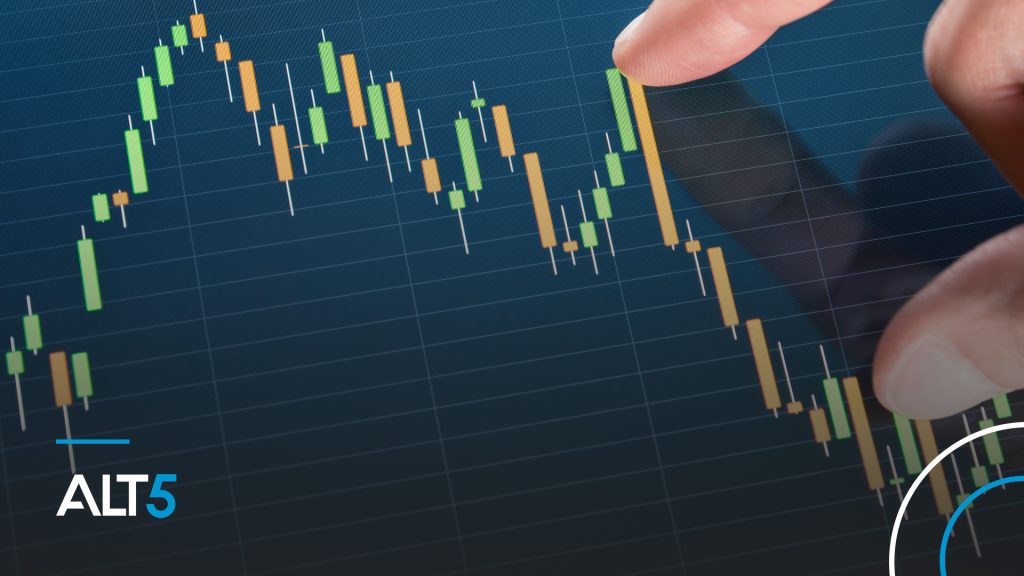Major crypto assets attempt to stabilize along with equities and bond yields
Macro factors continue to dominate crypto trading
Covid lockdowns pressure China’s economy; look for a policy response

Major crypto assets were attempting to stabilize heading into the long holiday weekend after registering sizeable losses from their late-March / early-April peaks. Just as the pullback in crypto came alongside another measurable leg higher in US / global yields (the US 10-year Treasury yield rose another 44 basis points just since the start of April) and US equities (the NASDAQ 100 lost 8% from its early-April high), the relative stabilization in crypto prices in recent days has concurred with some stability in bond and stock markets.
Crypto and risk assets remain closely correlated
The recent price action highlights the fact that the drivers of crypto prices—or at least the correlations—vary over time. In recent months, financial markets broadly are contending with surging inflation, a dramatic reversal in central bank policies, downside risks to economic growth and geopolitical risks stemming from the Russia / Ukraine war. That has caused a significant pullback in financial asset prices broadly and crypto assets have clearly not been immune to those same forces. That will not remain the case indefinitely, but it clearly looks to be important in the near-term.

A brief comment on bitcoin and inflation
Along those same lines, it is equally obvious that bitcoin has not benefited from the recent rise in inflation. The pullback in bitcoin’s price from its November peak near $69,000 to current levels near $40,000 while US CPI has is risen to 41-year highs of 8.5% runs contrary to the theory that the crypto asset is a good inflation hedge. In fact, the price action of the past six months could even suggest the opposite is true.
However, that conclusion is probably too simplistic. It overlooks the reality markets are more complex, that there are a number of factors that can influence prices, and that the magnitude of that influence varies over time and circumstance. We will look more closely at the relationship between bitcoin and inflation in the near future. In the meantime, we expect that macro and geopolitical factors will continue to be a primary focus of and influence on crypto assets in the foreseeable future.
The coming week brings more inflation data
Looking ahead, the coming week brings inflation readings from Canada, the Eurozone, Japan and New Zealand. That follows this past week’s inflation readings from the US which saw CPI and PPI both rise to new cycle highs. And while there is some speculation that those prints could mark the “peak” of inflation (partly because oil prices have pulled back), it is not at all clear that will be the case.
What is clear is that the Federal Reserve and other central banks are more intent on tightening monetary policy to address inflation that is well beyond their respective targets and to begin to withdraw the massive liquidity the have pumped into economies and the financial system over the past two years.
Central banks continue to tighten
This past week, central banks in Israel, New Zealand and Canada raised interest rates and signaled that more tightening is coming. And in the US, comments from Fed officials continue to guide markets to expect accelerated rate hikes and balance sheet reduction in the coming months. Markets have clearly adjusted to some of that outlook (i.e., higher market yields and lower equity / crypto prices), but it appears as though there is more to come. Note that the next FOMC meeting in May 3-4.
China stresses persist and bear monitoring
Chinese Premier Xi reiterated that the country must maintain strict covid protocols. The economic costs will be material, as the New York Times cited estimates that nearly one-third of China’s 1.4 bln population is under some form of lockdown. China is the world’s second largest economy and economic developments there can indeed have ripple effects globally. As a result, crypto market participants will want to monitor upcoming events in China, where data/events in the coming week are highlighted by Q1 GDP and a central bank policy meeting.
Contrary to much of the rest of the world, Chinese authorities are likely to ease monetary and fiscal policy to address the economic stresses stemming from the lockdowns. In the past, China policy easing has sometimes boosted risk appetite in financial markets, at least temporarily. Accordingly, these developments can have implications for crypto asset prices.
On the charts
Bitcoin is trading on either side of the $40,000 threshold. Next support looks to be at the cluster of March lows between $37,100 and $37,600. Similarly, Ethereum is trading near $3,000 with close-by support at the $2,950 area defined by both the 50-day and 100-day moving averages. Solana currently trades near $100, just above support at the $98.00-$99.00 area, defined by this week’s lows and the 50-day moving average.
